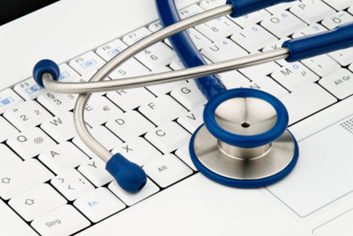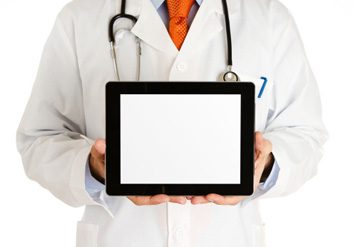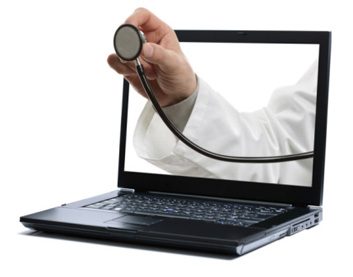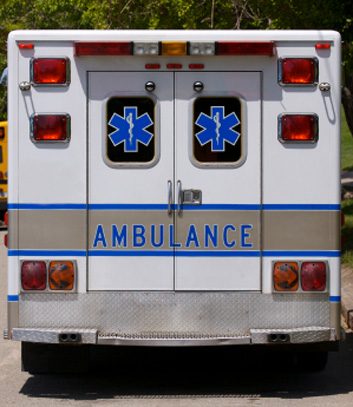
The latest developments in Canadian health care
You may already be booking your appointments or checking the results of your lab tests online. If you change homes, your electronic health record easily moves with you. But that’s only the beginning. Picture this: Someone is injured in a car accident in the middle of the night and their X-rays are diagnosed in minutes by a radiologist who has just climbed out of bed and turned on his home computer. And did you know you may soon be able to take a virtual hospital tour before surgery? Or become an “avatar patient” at a support group or chat with a doctor? Our healthcare system is far from perfect in many regions of Canada, but meaningful steps are being taken into the future, and digital technology is improving efficiency. Here are some of the latest developments.

Telemedicine
The provision of healthcare services over distances has existed in Canada for more than a decade, but is rapidly advancing. Mobile telemedicine carts enable clinicians to conduct bedside procedures, such as X-rays and ultrasounds, and immediately transmit the images or results to specialists in larger centres. Expectant moms in small-town B.C. can receive live interpretation of their prenatal ultrasound by a perinatologist in Vancouver’s B.C. Women’s Hospital. Programs in B.C. service 100 communities in 20 clinical areas, including oncology, cardiology and wound care. Ontario’s Telemedicine Network provides service to every hospital in Ontario. In Saskatchewan, 83 communities are serviced via telehealth.
To visit a specialist, patients need go no further than their local hospital or mental health centre, where the appointment can be done via video conference. This allows specialists, who have the patient’s electronic health record, to get a visual sense of patients while assessing symptoms. In Westminster, B.C., at Royal Columbia Hospital’s telepsychiatry program, Dr. Ambrose Cheng has treated patients in this way since 2009. Dr. Terry Isomura, the hospital’s medical director of mental health, hopes to see the program become specialized in such aspects as reproductive psychiatry and helping moms with perinatal issues.
Telemedicine especially helps seniors. “It makes mental health care more accessible to seniors with physical or cognitive limitations, or who live in remote places,” says Dr. Karen Smith, geriatric psychiatrist at the Peterborough Regional Health Centre in Ontario.
Dr. John Pawlovich of Abbotsford, B.C., is using telehealth to bring primary care to six aboriginal communities in B.C.’s north. Nurses in the communities can ‘ connect online with Pawlovich and get expert opinion. Accidents, illnesses and prenatal emergencies are quickly attended to, which improves patient care and can reduce the need for costly air ambulances. Pawlovich also makes regular fly-in visits to maintain continuity of care. He is working with Ultrasonix Medical Corporation with a goal of using mobile ultrasound machines to diagnose patients hundreds of kilometres away.

Remote patient monitoring
Patients with a chronic disease or limited mobility can now have a “checkup” without leaving their home. They use mobile devices to transmit data such as blood pressure, glucose or oxygen levels to their healthcare provider. A study of more than 800 Ontario patients with chronic obstructive pulmonary disease (COPD) and congestive heart failure (CHF) showed major reductions in the average number of hospital admissions, ER visits and walk-in clinic visits. A great side effect? Remote monitoring boosts patient knowledge and encourages personal responsibility for health.

Hospital developments
One year ago, The Ottawa Hospital (TOH) switched to iPads for physician ordering. Medical instructions can now be sent even from a remote location. Instant test results, patient updates, and information such as drug dosage and interaction are a tap away. “TOH has 2,600 iPads being used by staff physicians, residents, pharmacists and liaison nurses, and we are preparing a trial of iPhones for frontline nursing staff,” says Dr. Glen Geiger, a physician and TOH’s chief medical information officer.

Post-surgery care
At Women’s College Hospital in Toronto, chief of surgery Dr. John Semple is piloting a mobile app (which he helped design) for post-surgery follow-up. Once home, patients submit daily reports and forward images of their incision via an assigned smartphone. Physicians can monitor healing visually and intervene if there are complications. “It’s a virtual house call. I’m now aware of how patients are doing even when they are at home,” says Semple.

Emergency services
At St. Michael’s Hospital in downtown Toronto, emergency trauma patients can be “seen” by specialists from large trauma centres via video-conferencing equipment, decreasing diagnostic response time and speeding up treatment, thanks to the Toronto Trauma Telemedicine program.
Related:
• 7 steps to make sure you get the best medical care
• Are medical wait times in Canada too long?
• Canada’s best medical care for women

Emergency services
At St. Michael’s Hospital in downtown Toronto, emergency trauma patients can be “seen” by specialists from large trauma centres via video-conferencing equipment, decreasing diagnostic response time and speeding up treatment, thanks to the Toronto Trauma Telemedicine program.
Related:
• 7 steps to make sure you get the best medical care
• Are medical wait times in Canada too long?
• Canada’s best medical care for women
